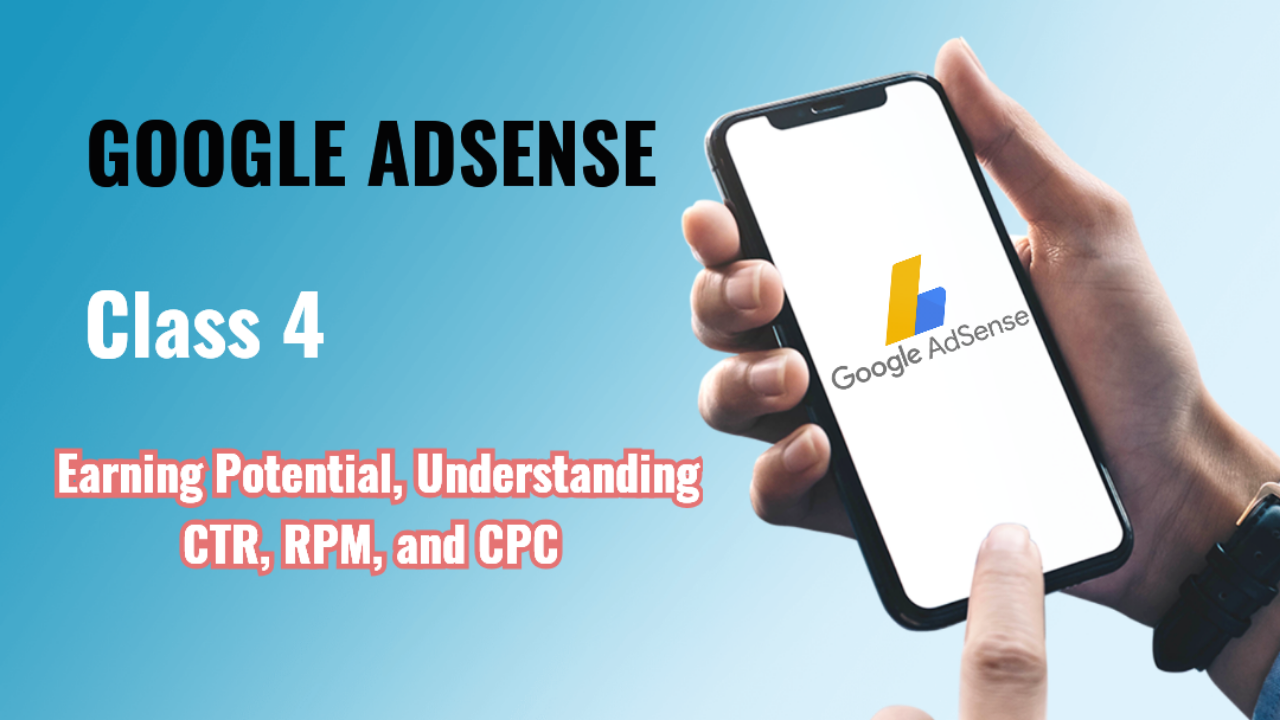Class 4: Placing Ads on Your Website
In this class, we’ll focus on how to place ads on your website, the best practices for ad placement, and how to integrate the ad code into your site. Knowing where to place your ads effectively is key to maximizing your AdSense revenue while ensuring that your website’s user experience remains intact.
4.1 How Google AdSense Ad Placement Works
Once your AdSense account is approved, you can start placing ads on your website. The process involves generating ad codes from your AdSense account and inserting them into specific sections of your website where you want the ads to appear.
Google AdSense gives you a lot of flexibility to decide where the ads will be placed. However, strategically positioning ads in high-traffic areas can significantly improve your click-through rate (CTR) and earnings.
4.2 Best Practices for Ad Placement
When placing ads on your website, it’s essential to strike a balance between maximizing revenue and maintaining a positive user experience. Too many ads can overwhelm your visitors, leading to high bounce rates, while too few may limit your earning potential.
Here are some best practices for ad placement:
-
Above the Fold Placement:
- What is it?: “Above the fold” refers to the part of a webpage that is visible without scrolling. Ads placed here tend to get more visibility.
- Where to place?: Common areas include the header, just below the navigation bar, or at the top of the sidebar.
- Best ad types: Banner ads (728x90), leaderboard ads, or responsive ads work well in these positions.
-
In-Content Ads:
- What is it?: Placing ads within your content, such as in the middle of a blog post or article, can generate higher engagement since the ad appears as part of the user’s reading flow.
- Where to place?: Ads can be inserted after the first few paragraphs or midway through the article.
- Best ad types: In-article ads or medium rectangle (300x250) ads work well in these positions.
-
Sidebar Placement:
- What is it?: The sidebar is a common place for ads because it’s visible as users scroll through your content.
- Where to place?: Sidebars are often found on the right-hand side of the page.
- Best ad types: Vertical ads like skyscrapers (120x600) or large rectangles (336x280) are suitable for this area.
-
Ad Placement on Mobile Devices:
- What is it?: As more users access websites via mobile devices, optimizing your ad placements for mobile screens is crucial.
- Where to place?: Responsive ads work best on mobile since they adjust to the screen size, but placing an ad just below the header or within content is usually effective.
- Best ad types: Responsive ads or in-feed ads are ideal for mobile devices.
-
Footer Ads:
- What is it?: Ads placed at the bottom of the page in the footer can still capture attention without being intrusive.
- Where to place?: At the bottom of each page or after an article ends.
- Best ad types: Leaderboard (728x90) or horizontal banner ads (468x60) work well.
4.3 How to Place Ads on Different Website Platforms
Depending on the platform you’re using to build and manage your website, the method for placing ads can vary. Below are the steps for some of the most popular platforms:
WordPress
-
Using AdSense Plugins:
- The easiest way to place ads on a WordPress site is by using plugins such as Ad Inserter or Advanced Ads. These plugins allow you to manage ad placements across your site without having to touch the code.
-
Manually Inserting Ad Code:
- Log in to your WordPress dashboard.
- Navigate to Appearance > Widgets.
- Drag a custom HTML widget to the section (e.g., header, sidebar, footer) where you want to display the ad.
- Paste the AdSense ad code into the widget.
- Save and preview your changes.
Blogger
-
Auto Ads:
- For Blogger users, Google AdSense provides an option to automatically insert ads on your blog.
- Go to Layout > Add a Gadget > AdSense in your Blogger dashboard.
- Choose where you want to place the ads, such as in the sidebar or between blog posts.
-
Manual Placement:
- To manually insert ads, go to your Blogger dashboard.
- Navigate to Theme > Edit HTML and paste the AdSense code directly into the HTML of your site.
- Make sure to place it where you want the ad to appear, such as before or after a post.
Custom HTML Websites
- Add AdSense Code Manually:
- If you have a custom-built website, you’ll need to add the AdSense code manually.
- Log in to your AdSense account and go to the Ads > Ad Units section.
- Create a new ad unit, select the size and type, and copy the ad code.
- Insert the code into your website’s HTML file in the desired location (e.g., within the
<body>tag for in-content ads or the<header>for top banner ads).
Shopify
-
Using Shopify Apps:
- Shopify doesn’t natively support Google AdSense, but you can use apps like Easy Google AdSense or insert code manually.
-
Manual Code Insertion:
- Go to your Shopify dashboard and navigate to Online Store > Themes.
- Select Edit Code for the theme you are using.
- In the theme.liquid file, paste the AdSense code where you want the ad to appear, such as in the header or footer.
4.4 AdSense Auto Ads
What Are Auto Ads?
- Auto Ads is a feature offered by Google AdSense that automatically places ads on your site. It uses machine learning to determine the best placement for your ads without requiring manual input.
How to Set Up Auto Ads:
- Log in to your AdSense account.
- Go to Ads > Overview, then select your website.
- Toggle on Auto Ads and choose the types of ads you want (e.g., text, display, in-feed).
- Click Apply to Site.
Pros of Auto Ads:
- Google handles all the placements for you, saving time.
- Optimized placements based on user behavior and page structure.
Cons of Auto Ads:
- Less control over where ads appear. Ads might be placed in locations you don’t want.
4.5 Testing and Optimizing Ad Placements
A/B Testing:
- One of the most effective ways to find the best ad placement is through A/B testing. This involves trying different placements or ad formats and seeing which ones perform best.
How to Perform A/B Testing:
- Create different versions of a page, each with a unique ad placement.
- Use tools like Google Optimize or Optimizely to split traffic between these page versions.
- Analyze which version generates the most clicks and revenue.
Heatmap Tools:
- Tools like Hotjar or Crazy Egg can show you where users are spending the most time on your site, helping you identify prime ad locations.
Monitor Performance in AdSense:
- In your AdSense dashboard, regularly check reports for metrics like CTR, impressions, and revenue by ad unit. This data can help you identify which ad placements are performing best.
Class Summary
In this class, we explored how to place ads on your website, including best practices for ad placement, how to manually insert ad code on various platforms, and how to use Google’s Auto Ads feature. Placing ads in strategic locations, such as above the fold, within content, or in the sidebar, can greatly improve your earnings. Additionally, testing different ad placements can help you optimize performance.
In the next class, we’ll discuss how to optimize your AdSense settings and improve your overall earnings.
Key Takeaway: Placing ads in high-visibility areas without sacrificing user experience is essential. Use A/B testing and performance monitoring to find the best ad placements for your site.




















